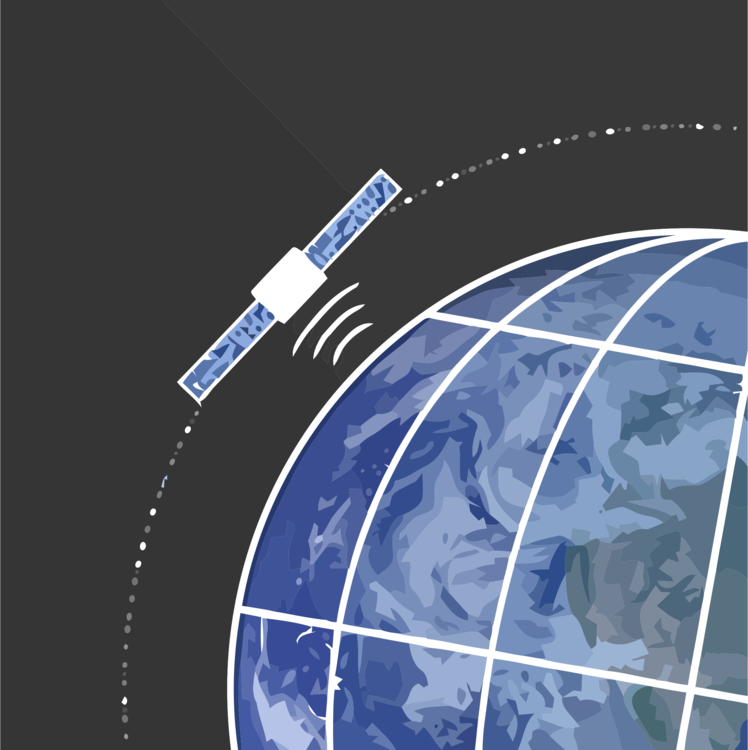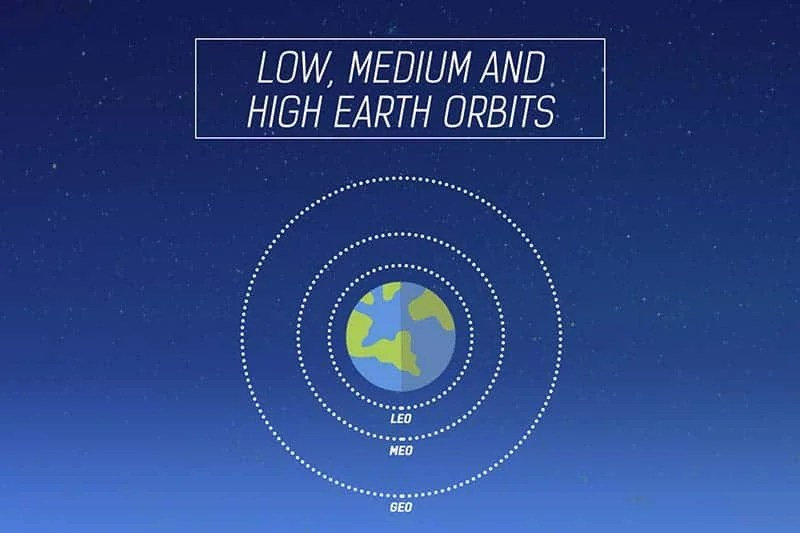A low Earth orbit (LEO) is, as the name suggests, an orbit that is relatively close to Earth’s surface. It is normally at an altitude of less than 1000 km but could be as low as 160 km above Earth – which is low compared to other orbits, but still very far above Earth’s surface. Those at medium Earth orbit (between about 2,000 and 35,780 km, or 1,242 and 22,232 miles) move more slowly, allowing for more detailed studies of a region. At geosynchronous orbit, however, the. Medium Earth Orbit. An affordable alternative to HEO? David Bowman G0MRF. Conclusions:.Inclusion of simple propulsion can substantially increase coverage from high LEO / MEO. We have 34 years of experience on the edge of the radiation belts. Footprint from safe zone is 85% of coverage from HEO.
As of the beginning of 2019, nearly 5,000 satellites are orbiting our planet — more, since SpaceX just launched 60 Starlink communications satellites in one monumental event. With so many orbiting bodies circling the Earth, it’s a miracle they don’t crash into each other, right?
It might seem like magic, but in reality, it’s because they aren’t all orbiting at the same height. Let’s take a closer look at what LEO, MEO and GEO satellites are, and why more companies are investing in LEO and MEO satellites to support space exploration.
LEO — Low Earth Orbit
Satellites in low Earth orbit, or LEO, are the closest devices to Earth. They’re only 500 to 1,000 miles above the Earth’s surface, making them ideal for satellite phone and GPS communication. The relatively small distance means there is a minimal delay between the data leaving the satellite and it reaching its target on Earth — usually about 0.05 seconds.
It takes a lot of LEO satellites to cover the planet, which is why there are so many of them up there. The Iridium Communications Network will consist of 66 satellites total, while the Starlink constellation will include nearly 12,000 satellites once they’ve all launched, though they won’t all be in LEO.
The International Space Station is also in low Earth orbit.
MEO — Medium Earth Orbit
Medium earth orbit, or MEO, satellites are a bit of a middle ground between LEO and GEO orbits, circling the planet at an altitude of 8,000 miles. These satellites handle high-speed telephone signals and may, in the future, find a place in the military sector as a tool to provide low-latency high-bandwidth internet to military personnel around the globe.
In spite of a slightly higher signal lag of about 0.1 seconds, depending on the size of the antenna, these MEO satellites can transmit data as quickly as 1.6 gigabits per second. For comparison, the fastest readily available commercial internet, not counting Google Fiber cities, is usually around 100 MB/s — less than a tenth of the speed these MEO satellites will be capable of providing.
As these devices move further out into the cold of space, they need more tools to protect the sensitive computer equipment that makes them work. Heat pipes have two purposes — they can transport heat away from the electronics to prevent them from overheating, and they can redirect that heat to different parts of the satellite to prevent them from freezing.
GEO/GSO — Geosynchronous Equatorial and Geostationary Orbits
You’ll often hear the terms GEO and GSO used interchangeably, but they’re not always the same. Both types of satellites sit at roughly 22,300 miles above Earth’s surface, but the way they orbit is different. Both orbits synchronize with the orbit of the planet, so they appear in the same place every day. The difference between them is that GEO satellites orbit on an angle between the planet’s poles, while GSO satellites carry out the same high-altitude circular orbit around the Earth’s equator.
Both GEO and GSO satellites carry satellite television signals. GSOs can also forecast the weather and support other types of global communication. It only takes three GEO or GSO satellites to cover the entire planet because of their altitude. If you’re accessing satellite TV or radio, you don’t have to use the antenna to track the satellite because it’s always going to be in the same place.
Satellites and Space Exploration
Satellites used to be a “last resort” for communicating with remote areas, but today they’re a vital tool to support global information exchange. Eventually, they may even allow us to communicate quickly and easily between bases and colonies on the Moon, Mars and beyond.
SpaceX, OneWeb and even Facebook are working on designing satellite constellations that will provide affordable consumer internet to the entire planet. SpaceX got the ball rolling with the launch of the first 60 satellites of their Starlink constellation. Eventually, these communication satellites will sit in all three orbits, providing fast and affordable internet to anyone with a compatible device.
Looking Toward the Future
The future of human communications, both at home and in outer space, lies in the stars — or, rather, in the constellation of satellites orbiting our planet. We don’t have colonies on our closest celestial neighbors — yet — but we’re well on our way to becoming the interstellar species all the science fiction readers and writers have been dreaming about for decades.
There are 4 types of orbits, they are:
1. GEO (Geo-stationary earth orbit)
2. MEO (medium earth orbit)
3. LEO (Low earth orbit) and
4. HEO (Highly elliptical orbit)
Geo-Stationary Earth Orbit

These satellites have almost a distance of 36,000 km to the earth.
E.g. All radio and TV, whether satellite etc, are launched in this orbit.
Advantages of Geo-Stationary Earth Orbit
1. It is possible to cover almost all parts of the earth with just 3 geo satellites.
2. Antennas need not be adjusted every now and then but can be fixed permanently.
3. The life-time of a GEO satellite is quite high usually around 15 years.
Disadvantages of Geo-Stationary Earth Orbit
1. Larger antennas are required for northern/southern regions of the earth.
2. High buildings in a city limit the transmission quality.
3. High transmission power is required.
4. These satellites cannot be used for small mobile phones.
5. Fixing a satellite at Geo stationary orbit is very expensive.
Medium Earth Orbit Definition
Medium Earth Orbit

Satellite at different orbits operates at different heights. The MEO satellite operates at about 5000 to 12000 km away from the earth's surface.
These orbits have moderate number of satellites.
Advantages of Medium Earth Orbit
1. Compared to LEO system, MEO requires only a dozen satellites.
2. Simple in design.
3. Requires very few handovers.
Disadvantages of Medium Earth Orbit
Medium Earth Orbit Height
1. Satellites require higher transmission power.
2. Special antennas are required.
Low Earth Orbit
LEO satellites operate at a distance of about 500-1500 km.
Advantages of Low Earth Orbit
1. The antennas can have low transmission power of about 1 watt.
2. The delay of packets is relatively low.
3. Useful for smaller foot prints.

Disadvantages of Low Earth Orbit
1. If global coverage is required, it requires at least 50-200 satellites in this orbit.
2. Special handover mechanisms are required.
3. These satellites involve complex design.
4. Very short life: Time of 5-8 years. Assuming 48 satellites with a life-time of 8 years each, a new satellite is needed every 2 months.
5. Data packets should be routed from satellite to satellite.
Highly Elliptical Orbit
This orbit is made for satellites that do not revolve in circular orbits, only a very few satellite are operating in this orbit.
Medium Earth Orbit Distance
Medium Earth Orbit
Average acceleration is the object's change in speed for a specific given time period. ...
When an object falls into the ground due to planet's own gravitational force is known a...
In Mathematics, the permutation can be explained as the arrangement of objects in a particular order. It is an ordered...A rectangle can be explained as a 4-sided quadrilateral which contains equal opposite sides. In a rectangleA three sided polygon which has three vertices and three angles is called a triangle. Equilateral triangle...